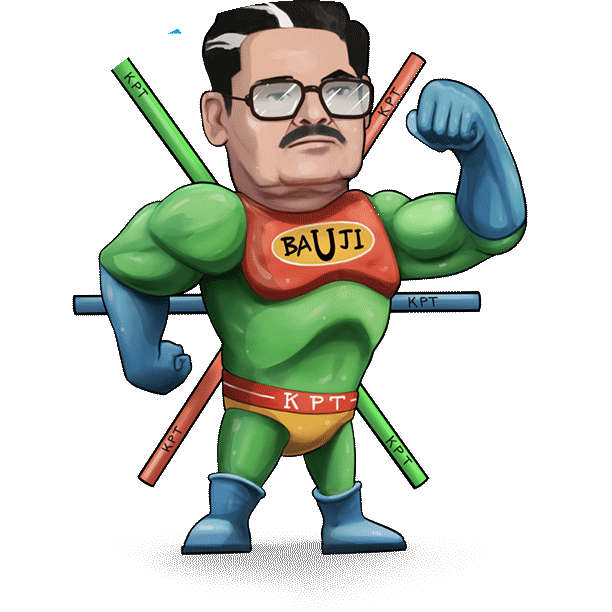In the modern world of plumbing, the demand for reliable, durable and efficient piping solutions has never been higher. Triple PPR-C pipes have proven to be the best choice for residential, commercial and industrial applications due to their exceptional performance and versatility. These pipes are an advanced form of PPR (Polypropylene Random Copolymer) pipes that come with a unique three-layer construction that offers superior benefits over traditional plumbing systems. In this blog, we will explore the various aspects of PPR-C three-layer pipes, from their composition to their uses, and benefits and why they are considered game-changers in the plumbing world.
Table of Contents
ToggleWhat Are PPR-C Three Layer Pipes?
PPR-C Three Layer Pipes are a type of piping system made of a combination of three different layers: an inner layer of pure polypropylene (PPR), a middle layer of aluminium, and an outer layer of polypropylene copolymer (PPR-C). This innovative structure provides a number of advantages over standard single-layer PPR pipes, making them ideal for a variety of plumbing needs. The aluminium layer serves as a barrier preventing the diffusion of oxygen and thus extends the life of the pipe system. It also helps maintain pipeline integrity in extreme conditions.
Composition of PPR-C Three-Layer Pipes
The three-layer composition of PPR-C pipes distinguishes them from traditional PPR pipes. Let’s break down the layers:
- Inner Layer (PPR): The inner layer is made of high-quality polypropylene, which is highly resistant to corrosion and scaling. It ensures a smooth flow of liquid and minimizes the risk of clogging and clogging.
- Middle Layer (Aluminum): The middle layer consists of a thin layer of aluminium that gives strength and rigidity to the tube. This layer prevents oxygen from entering the water, making it ideal for systems transporting potable water or sensitive liquids. Aluminum also helps maintain the structural integrity of the piping during high pressure and temperature changes.
- Outer Layer (PPR-C): The outer layer of the pipe is made of a polypropylene copolymer known as PPR-C. This layer provides extra durability and resistance to environmental factors such as UV rays, chemicals and extreme weather conditions. It also increases the overall mechanical strength of the pipe.
Key Benefits of PPR-C Three-Layer Pipes
The PPR-C three-layer pipe system offers a number of advantages that make it the preferred choice for a variety of applications. Let’s explore some of these advantages in more detail:
1. Enhanced Durability
The multi-layer construction of PPR-C pipes provides superior strength and durability compared to traditional single-layer pipes. The aluminium layer provides extra rigidity and reduces the risk of deformation or damage under stress. The PPR-C outer layer further increases the pipe’s resistance to physical damage by external factors and ensures a long service life.
2. Corrosion Resistance
One of the most significant advantages of three-layer PPR-C pipes is their resistance to corrosion. The PPR inner layer is highly resistant to corrosion, scaling and chemical corrosion, making these pipes ideal for both hot and cold water. The aluminium layer also acts as a barrier to prevent external elements from affecting the integrity of the pipe.
3. High Thermal and Pressure Resistance
Triple-layer PPR-C pipes are designed to withstand high temperatures and pressure levels, making them suitable for use in hot water systems as well as industrial applications. The combination of polypropylene and aluminium allows the tubes to handle temperatures of up to 95°C (203°F) and pressures of up to 25 bar, ensuring reliable performance in demanding conditions.
4. Oxygen Barrier
The aluminium middle layer provides an oxygen barrier that prevents oxygen from entering the water supply. This property is essential for systems transporting potable water, as the presence of oxygen can lead to the growth of microorganisms, which affects water quality and can cause pipe damage. By blocking the diffusion of oxygen, PPR-C pipes help maintain water purity and extend the life of the system.
5. Lightweight and Easy to Handle
Despite their robust construction, the three-layer PPR-C pipes are light and easy to handle. This makes them easier to transport, install and maintain, reducing labour costs and installation time. Their flexibility also allows for easy bending, simplifying the installation process in complex plumbing systems.
6. Sustainability
Three-layer PPR-C pipes are a sustainable choice for water systems. The materials used in their construction are environmentally friendly and the tubes are recyclable, making them an environmentally friendly option. Additionally, the durability and longevity of PPR-C pipes reduce the need for frequent replacements, minimizing waste and environmental impact.
7. Cost-Effectiveness
While the initial cost of PPR-C triple-layer pipes may be slightly higher than traditional pipes, their long-term performance and durability make them a cost-effective choice. Reduced maintenance costs, fewer repairs and the need for fewer replacements over time result in significant savings for both residential and commercial property owners.
Applications of PPR-C Three-Layer Pipes
Three-layer PPR-C pipes are versatile and can be used in a wide range of applications. A few of the typical applications are:
1. Residential Plumbing
PPR-C pipes are ideal for use in domestic water supply systems. They are used to transport hot and cold water and provide a reliable and durable plumbing solution. Due to its resistance to corrosion and high temperatures, PPR-C pipes are often used in kitchens, bathrooms and other areas that require durable water supply systems.
2. Industrial Applications
These pipes are also used in industrial water systems, especially in environments that require resistance to high pressure and temperature. They are used to transport hot water, chemicals and other liquids in factories, manufacturing plants and processing facilities.
3. Heating Systems
The exceptional thermal resistance of the three-layer PPR-C pipes makes them an excellent choice for heating systems. They are commonly used in radiant heating systems, underfloor heating and hydronic heating circuits due to their ability to maintain constant temperatures without compromising the integrity of the system.
4. Commercial and Public Infrastructure
In commercial buildings, hospitals, schools and other public infrastructure, PPR-C pipes are used to ensure reliable water supply and water distribution. The oxygen barrier function ensures that the water remains clean and safe, making these pipes ideal for potable water systems.
5. Agricultural and Irrigation Systems
Three-layer PPR-C pipes are also used in agricultural applications, especially in irrigation systems. Their resistance to environmental factors such as UV radiation and extreme weather ensures that they provide a long-term solution for efficient water distribution in farms and gardens.
Installation and Maintenance of PPR-C Three-Layer Pipes
One of the reasons for the growing popularity of three-layer PPR-C pipes is their easy installation. These pipes can be joined using heat fusion welding techniques, ensuring a secure and tight connection. The absence of mechanical fittings reduces the probability of joint failure, which makes these pipes even more reliable.
Maintenance of PPR-C pipes is minimal due to their resistance to corrosion and scaling. Regular checks are generally sufficient to ensure proper system operation. In the rare event that a pipe is damaged, it can be easily replaced by cutting and welding new sections into place, a much simpler and more cost-effective process compared to traditional piping systems.
Conclusion
Three-layer PPR-C pipes offer an excellent combination of durability, performance and versatility, making them the best choice for plumbing applications in a variety of industries. Their advanced aluminium interlayer increases their resistance to corrosion, heat, pressure and oxygen diffusion, providing a long-lasting and effective solution. Whether for residential, industrial or commercial applications, PPR-C pipe provides exceptional performance and value. As more and more property owners and businesses look for reliable and sustainable plumbing solutions, PPR-C Three-Layer Pipes will continue to represent a game changer in the industry.
FAQs
Q1.What is the difference between PPR-C Three Layer Pipes and standard PPR pipes?
Ans: Three-layer PPR-C pipes differ from standard PPR pipes mainly due to their three-layer construction. While standard PPR pipes are made of a single layer of polypropylene, three-layer PPR-C pipes consist of an inner layer of PPR, a middle layer of aluminium and an outer layer of PPR-C. The aluminium layer in PPR-C pipes acts as an oxygen barrier that prevents the diffusion of oxygen into the water and adds rigidity and strength, making these pipes more durable and suitable for high-pressure and high-temperature applications.
Q2.Are PPR-C Three-Layer Pipes safe for drinking water?
Ans: Yes, three-layer PPR-C pipes are safe for transporting drinking water. The materials used in the construction of these pipes, including polypropylene and aluminium layers, are non-toxic and do not leach harmful substances into the water. Additionally, the oxygen barrier provided by the aluminium layer helps maintain water quality by preventing microbial growth, making them a suitable choice for residential, commercial and industrial plumbing systems that carry potable water.
Q3.Can PPR-C Three-Layer Pipes be used for both hot and cold water systems?
Ans: Yes, PPR-C three-layer pipes are ideal for both hot and cold water systems. The polypropylene inner layer provides excellent heat resistance, which means these tubes can withstand temperatures up to 95°C (203°F). Furthermore, the aluminium layer adds structural strength while also ensuring that the tubes maintain their integrity even under high pressure and temperature changes. As a result, PPR-C pipes offer a reliable and versatile solution for hot and cold water distribution in residential, commercial, as well as industrial applications.


